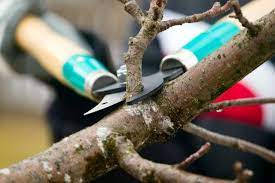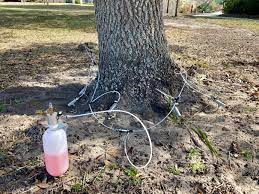Tree Diagnosis and Treatment
Providing oxygen, shade, and aesthetic value to our surroundings, trees are a crucial component of our natural environment. They are, however, also prone to a number of illnesses that can weaken and even kill them. Diagnosis and treatment of tree diseases are essential for keeping our communities’ trees healthy and flourishing. In this arrticle, the common tree diseases, various treatments, and the significance of early diagnosis and intervention are all covered.
Finding the root reasons of a tree’s symptoms or deterioration is the process of “tree diagnostics.” Leaf browning, wilting, dieback, early defoliation, bark cracking, and irregular growth patterns are a few typical symptoms of tree distress. Insect infestations, fungal infections, nutritional deficits, soil compaction, and environmental stressors like drought or extreme heat are only a few of the causes of these symptoms.
An arborist or tree care specialist would often perform a thorough examination of the tree’s leaf, bark, and general structure to diagnose a tree. In order to ascertain whether any environmental elements may be causing the tree’s decline, they will also evaluate the tree’s site characteristics, including the soil quality, water availability, and sunshine exposure.

Treatment Plan
The next stage is to create a treatment plan after the root cause of the tree's problems has been found. The tree's species, age, and location, as well as the degree and type of the condition, will all affect the treatment strategy. Pruning, fertilizing, soil aeration, pesticide or fungicide applications, and tree injections are typical remedies for tree issues.

Pruning
A frequent procedure for enhancing a tree's health and attractiveness is pruning. In order to promote sunlight penetration, thin out the tree's canopy, and improve the tree's aesthetic appeal, pruning entails removing dead or diseased limbs. Another typical remedy for nutritional inadequacies that can be causing the tree's decline is fertilization. Insecticide or fungicide sprays can be used to control pests and diseases that are harming the tree, while soil aeration can aid to improve soil drainage and encourage root growth.

Tree Injections
Another approach for treating some tree diseases and pests is tree injections. With tree injections, a solution is injected right into the tree's trunk and subsequently dispersed throughout the vascular system. This form of treatment is efficient for eradicating illnesses like Dutch elm disease and pests like the Emerald ash borer.